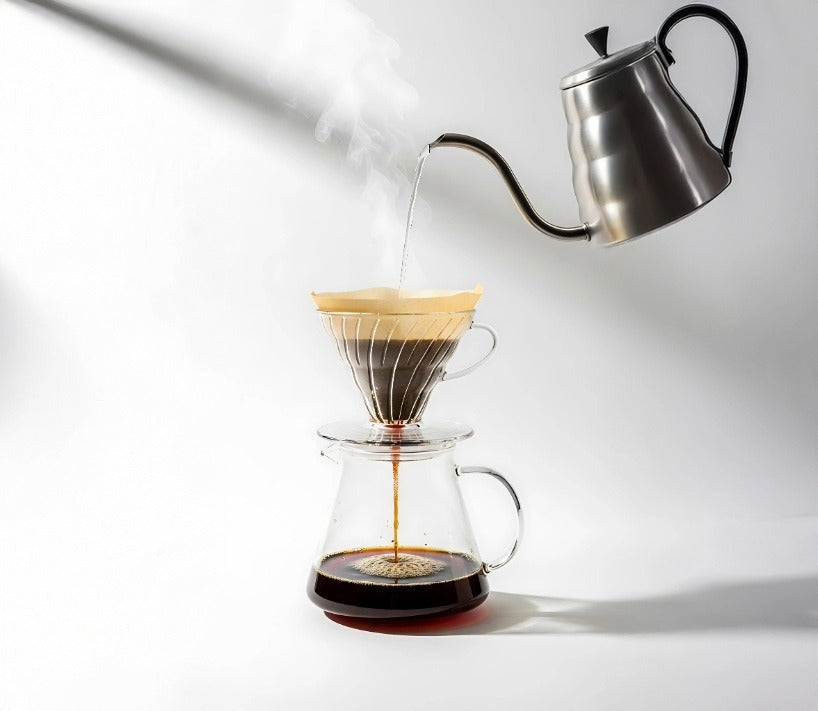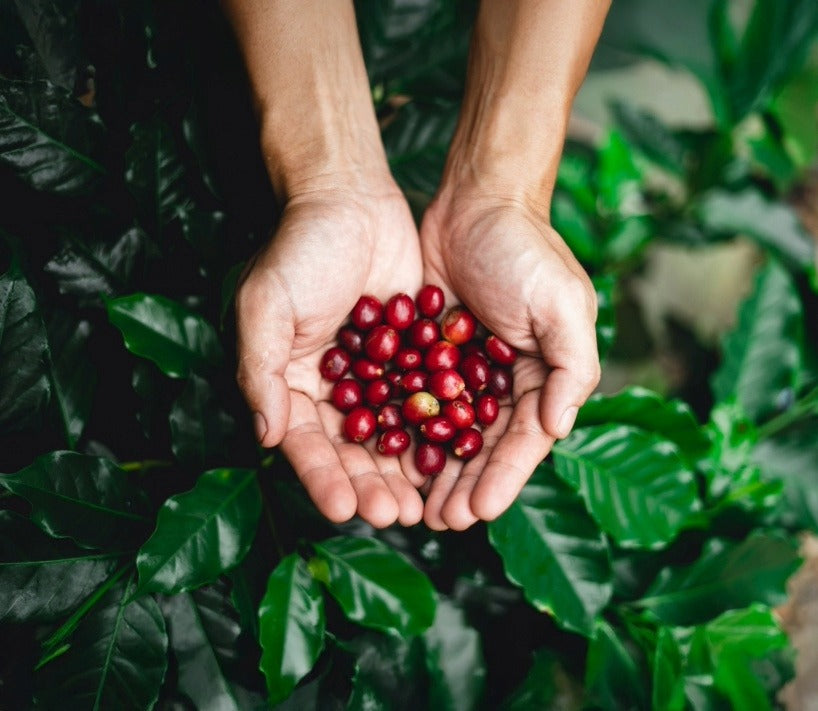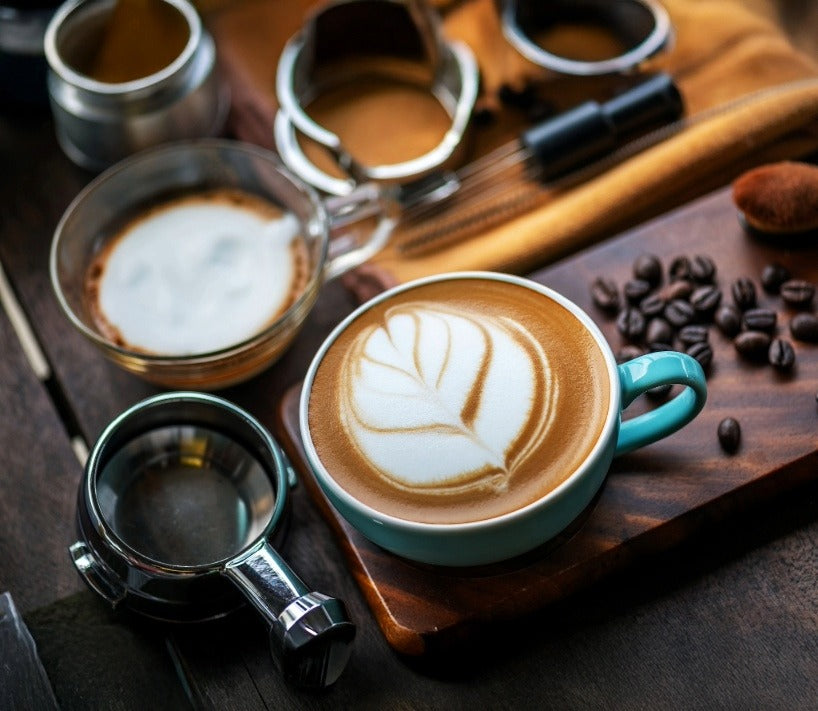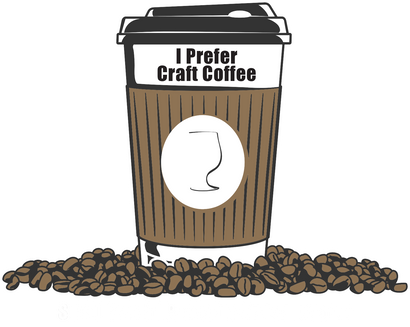Best Craft Coffee To Make at Home: Why Fancy Machines Can’t Fix Stale Beans
August 27, 2025 7 min read
Best Craft Coffee To Make at Home: Why Fancy Machines Can’t Fix Stale Beans
Once upon a Tuesday, my friend Sammy bought a shiny, boujie espresso machine. It had more buttons than a spaceship and made little beep songs like a happy robot. Sammy pulled a shot… and—uh oh—his face did the lemon pucker. “Why does this taste like hot grumpy juice?” he asked.
I peeked at his beans. The bag said “Roasted… six months ago.”
Sammy, buddy. You brought a race car to a mud puddle.
This is your playful, super-useful Best Craft Coffee To Make at Home guide. I’ll show you—like we’re building with blocks—how to get café-level flavor without wasting money, time, or taste buds. We’ll talk fresh beans, smart shopping when you order coffee online, and how to match what’s in the bag to what your tongue actually loves. No sales pitch. Just brain snacks and better sips.
The Big Problem No One Wants to Admit
Here’s the truth that rides a tiny unicycle through your kitchen: lots of new home baristas spend their budget on the fancy machine and then cheap out on coffee. Simple answer: BAD MOVE. Old beans can’t do magic, even if your machine can froth milk like a baby dragon.
Why the beans matter more than the bling
-
Fresh beans = flavor fireworks. Aromas are tiny, shy creatures that run away over time. Six-month-old beans are like balloons on day six—sad and floppy.
-
High score = higher floor. Specialty lots (typically scored 85+) have fewer defects and more clean, sweet cup potential. That doesn’t guarantee your favorite flavor, but it keeps “meh” at the door.
-
Roast style = your lane. Like shoes, a roast should fit your taste: light for fruit/flowers, medium for chocolate/caramel, dark for bold/toasty.
Proof-in-the-mug story
Sammy tried again with a fresh, clearly dated bag. Same machine. Same person. Different beans. Now the shot smelled like cocoa and cherry. His eyebrows did the happy dance. That wasn’t the machine suddenly learning manners—that was freshness + quality + the right style.
The Simple Playbook for Wow Cups
We’re using a friendly plan with three big levers:
-
Start with Quality: high-scoring beans (85+) and clean, even roasts
-
Pick Freshness you can verify (roast date on the bag, not just “best by”)
-
Match the roaster’s style to your taste (light, balanced/medium, dark)
We’ll also cover processes, dialing tips, and a 30-second product page audit so you can snag the best coffee to buy online like a pro.
1) Quality First: What to Look For (so you don’t buy a snooze)
On the product page, hunt these clues:
-
Specialty or Q-grade 85+ mentioned
-
Transparent details (origin, variety, process, altitude)
-
Believable tasting notes (think “strawberry, cocoa, caramel,” not “unicorn sparkle clouds”)
-
Roast approach that supports clarity—many roasters highlight clean, even development so origin flavors shine
Why even, clean roasting helps
Even heat development and clean air flow lower the “ashy” vibes and let origin character pop—fruit tastes fruitier, chocolate tastes chocolatier. That’s how you get the best craft coffee at home experience without wizard hats.
2) Freshness You Can See (roast date > “best by”)
Freshness window (simple guide):
-
Days 2–14 post-roast: most expressive for most brews
-
Days 15–30: still tasty, a little calmer
-
After ~30 days: lots of coffees fade (some last longer, but don’t risk your only morning joy)
Rest time by roast:
-
Light: 3–7 days to calm the zing
-
Medium: 2–5 days
-
Dark: 1–3 days
Storage basics:
Keep beans sealed, cool, dry, and dark (pantry, not fridge). Use that little one-way valve. Whole bean > pre-ground for hanging onto aroma; grind right before brewing when you can.
Red flags:
Only “best by,” no valve, no roast date, or “ships in 3–5 weeks.” That’s not freshest craft coffee online—that’s hide-and-seek.
3) Match the Roaster’s Lane to Your Taste
Roasters have style lanes. Find your lane; find your happy sip.
-
Light (bright & expressive): berries, citrus, florals; sparkly acidity; lighter body
If you like fruit teas and sunshine, hello friend. -
Balanced/Medium (sweet & familiar): chocolate, nuts, caramel; rounded acidity; medium body
If you like dessert in a mug, this is cozy town. -
Dark (bold & toasty): baker’s chocolate, smoke, spice; low acidity; heavy body
If you want big, strong, classic “coffee-coffee,” welcome home.
Fast lane-picker:
Say “chocolatey” → pick medium.
Say “fruity” → pick light.
Say “smoky/strong” → pick dark.
Flavor Decoder: Processing & Roast Level (the fun science part)
Processing is how farmers remove the fruit and dry the seeds (your beans). It changes sweetness, aroma, and body before roasting even happens.
-
Washed: fruit off first → clean, crisp, higher clarity (apple, citrus, tea)
-
Natural: dries in the fruit → jammy, sweet, bigger aromatics (blueberry, strawberry)
-
Honey: some fruit left on → round, honeyed, balanced tang (caramel, stone fruit)
-
Anaerobic / Fermented: sealed tanks, wild aromas → tropical, spiced, sometimes funky (pineapple, cola)
-
Wet-hulled: common in parts of Indonesia → deep, earthy, syrupy (cocoa, cedar)
Roast level effects:
-
Aroma & flavor: light keeps florals/berries; medium boosts caramels/nuts; dark turns roasty/bitter-sweet cocoa
-
Acidity (pleasant brightness): light > medium > dark (usually)
-
Body: dark feels heaviest; light feels juiciest
-
Solubility: dark extracts faster; light needs finer grind and better technique
If your cup tastes…
-
Sour/sharp: grind finer, brew hotter/longer, or go one notch darker or washed
-
Bitter/ashy: grind coarser, brew cooler/shorter, or go one notch lighter
-
Flat/dull: try natural or honey processes, or step one notch lighter
Comparison Table: Where to Spend First
| Your Move | Result in the Cup | Learning Curve | Wallet Impact | Happy-Mug Score |
|---|---|---|---|---|
| Boujie Machine + 6-Month-Old Beans | Shiny shots that taste tired | High (dial-in + milk tricks) | $$$$ | 😕 |
| Modest Brewer + Fresh 85+ Beans | Clean, tasty, repeatable | Low–Medium | $$ | 😄😄😄 |
| Entry Drip + Fresh Medium Roast | Chocolatey, comfy daily cup | Low | $ | 😄😄 |
| Fancy Grinder + Fresh Beans (any brewer) | Flavor clarity and consistency jump | Medium | $$–$$$ | 😄😄😄😄 |
Takeaway: Fresh, quality beans beat gadget glitter. A solid grinder + fresh beans can feel like a superpower.
30-Second Product Page Audit (No-Regret Checklist)
When you order coffee online or hunt the best coffee bean delivery, scan for:
-
High-scoring? Says specialty or 85+
-
Roast date? Printed and recent (not just “best by”)
-
Style lane? Clearly light/medium/dark
-
Process named? Washed / natural / honey / anaerobic / wet-hulled
-
Transparent details? Origin, variety, altitude (when available)
-
Notes realistic? Cocoa, almond, cherry > fairy poems
-
Shipping speed? Fast enough to enjoy inside the prime window (nice bonus if there’s best coffee online free shipping, but freshness comes first)
Brew Pairings (so your gear and beans hold hands)
-
Drip / Pour-over: light or medium; washed or honey for clarity & sweetness
-
French press: medium or dark; honey or wet-hulled for chocolatey, big body
-
Espresso: medium-dark for classic chocolate/nut; light-medium naturals for fruity shots (dialing-in needed)
-
Iced / Flash brew: light–medium washed or honey to stay bright over ice
Flavor Translator (what you like → what to buy)
| If you love… | Try this roast | Try this process | Likely notes |
|---|---|---|---|
| Bright fruit & tea | Light | Washed | citrus, florals, stone fruit |
| Blueberry jam vibes | Light–Medium | Natural | blueberry, strawberry, candy |
| Dessert-y comfort | Medium | Honey | caramel, nougat, red apple |
| Deep & earthy | Medium–Dark | Wet-hulled | cocoa, cedar, spice |
| Classic “coffee” | Medium–Dark | Washed/Honey | chocolate, toasted nuts |
| Tropical & wild | Light–Medium | Anaerobic | pineapple, spice, cola |
“Help, I Don’t Have a Grinder!”
Whole bean lasts longer, yes. But if you don’t own a grinder, it’s okay to ask for brew-specific grind (drip, press, espresso). Pair that with a recent roast date and you’re still cruising the top specialty coffee online lane.
Related Reads from I Prefer Craft Coffee (for deeper dives)
Quick Story Wrap (Reward in one minute)
Imagine two paths:
-
Path A: You spend big on a boujie machine, then feed it old beans. Shots taste frowny. You blame yourself, the water, the moon.
-
Path B: You get fresh, clearly dated 85+ beans that match your flavor lane. Even a simple brewer sings. Your kitchen smells like a tiny chocolate-berry parade. You sip. You smile. You do the little shoulder wiggle.
Pick Path B. Your taste buds will send thank-you notes.
FAQs (because your brain is curious and caffeinated)
Q1: Do I need a $1,000 machine to make great coffee?
Nope. Fresh, quality beans + decent grinder + consistent recipe beat gadget glitter. Machines help with convenience; beans decide the flavor.
Q2: How fresh is “fresh”?
Aim to drink most coffee between days 2–30 post-roast. Many peak in days 2–14; some last longer, but earlier is usually brighter.
Q3: What does 85+ mean?
It means the coffee lot scored 85 or higher on a 100-point specialty scale—usually cleaner, sweeter, and more interesting.
Q4: Which roast should I pick?
-
Like fruit/tea → Light
-
Like chocolate/caramel → Medium
-
Like bold/toasty → Dark
Q5: Which process should I start with?
Try washed for clean, crisp flavors. Love fruit bombs? Try a natural. Want sweet-and-smooth? Honey is your friend.
Q6: What if I don’t have a grinder?
Ask for the right grind for your brewer (drip, press, espresso). Use it while it’s fresh.
Q7: Shipping deals sound cool. Should I chase free shipping?
Nice perk—some places advertise best coffee online free shipping—but always check the roast date first. Free shipping can’t fix stale beans.
PS: If your espresso machine is a diva, don’t scold it—feed it better beans. Fresh, clearly dated, in your flavor lane. That’s the real Best Craft Coffee To Make at Home move. Your taste buds will giggle. Your wallet will chill. And your Tuesday will stop making lemon faces.
Also in Best Coffee To Buy Online Education

Biggest Mistake With Pourover Coffee: It's Your Beans
January 02, 2026 3 min read
Learn how to brew the best pourover coffee at home with the best tasting craft coffee online. Remember, the best coffee to drink at home starts with the freshest craft coffee online, not the bargain bin beans at your local supermarket.

Specialty Roast Coffee Beans Online: What’s the Deal, Really?
January 01, 2026 4 min read
You'll learn what specialty roast coffee beans online actually means, and why it translates to the best tasting craft coffee at home.

High-Score Coffee Beans Online: Why 85+ Points Actually Matter
December 31, 2025 3 min read
Learn why the best tasting craft coffee online is high-scoring specialty coffee that tastes better and how to choose the right beans online. Order coffee online from a roaster you trust.
